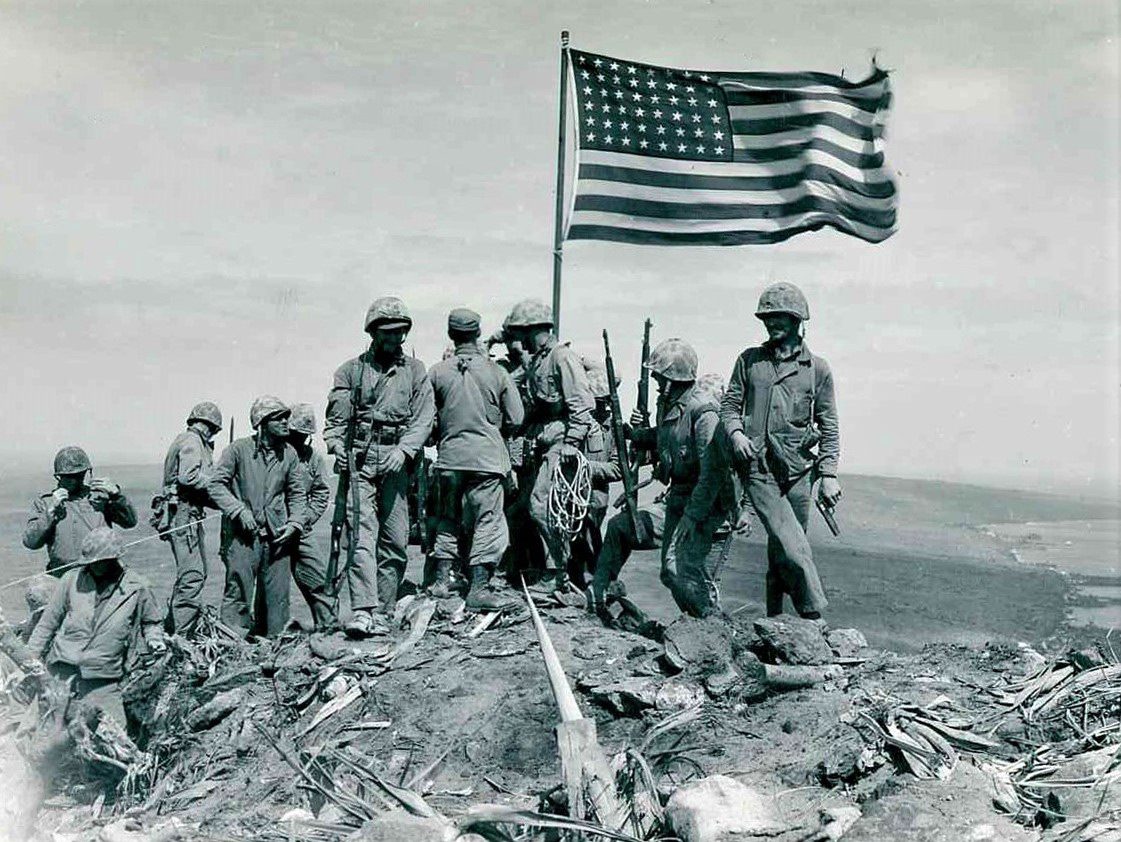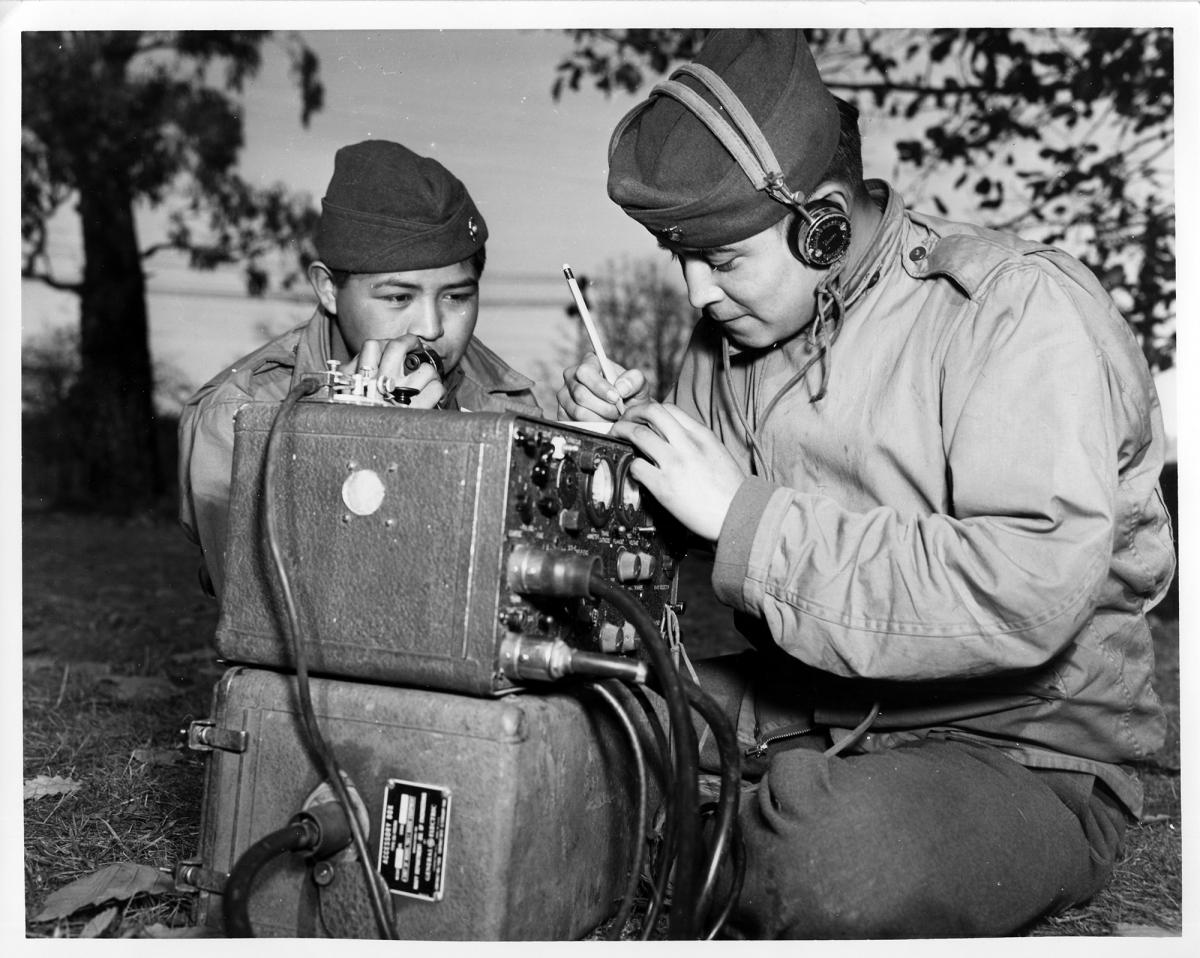
The story of the Navajo Code Talkers stands as one of the most extraordinary and overlooked chapters in the history of World War II. In an era where military strategy was heavily dependent on intelligence, secure communication was paramount to the success of the Allied forces.
The U.S. Marine Corps’ use of Navajo Code Talkers, a group of Native American Marines, was one of the most innovative and successful strategies for battlefield communication.
Their ability to use the complex and unbreakable Navajo language to encode messages allowed the U.S. military to communicate securely without fear of interception or decoding by the Japanese.
The Navajo Code Talkers developed a code based on the Navajo language, a code so intricate and difficult to decipher that Japanese cryptographers never succeeded in breaking it.
Their contributions were vital during some of the most significant battles in the Pacific, including the iconic battles of Iwo Jima and Okinawa. The success of the Navajo Code Talkers in ensuring secure communications played a pivotal role in securing victories for the United States and its allies in the Pacific Theater, and it remains one of the most impressive feats of military strategy in modern history.
Despite their extraordinary achievements, the role of the Navajo Code Talkers remained classified for many years, with their contributions not being publicly recognized until 1968.
Today, however, their legacy is celebrated as a testament to their courage, ingenuity, and devotion to their country. The Navajo Code Talkers’ unique role in the war highlights not only their importance as warriors but also their deep cultural knowledge and connection to the land.
Their contributions were not just a military victory but a profound demonstration of the strength of Native American heritage and culture during a time of global conflict.

The Formation of the Navajo Code Talkers
The need for secure communications during World War II became especially critical in the Pacific Theater. As the United States and Japan clashed in a battle for supremacy, it became increasingly apparent that the Japanese forces had an unparalleled ability to intercept and decode Allied messages.
To counter this threat, military leaders began looking for innovative solutions to safeguard battlefield communications.
In 1942, a Marine Corps officer, Philip Johnston, recognized the potential of the Navajo language as an unbreakable code. Johnston, the son of a missionary who had spent years working with the Navajo people, was fluent in the language and understood its complexity and intricacies.
At the time, the Navajo language had no written form, and its structure was entirely foreign to the Japanese. This made it an ideal candidate for encoding military messages.
Johnston proposed the idea to the U.S. military, and in 1942, the first group of 29 Navajo men was recruited to serve as Code Talkers in the Marine Corps. These men underwent rigorous training in both military communication and their specific role in the code.
They were tasked with translating critical military messages into Navajo, which were then encoded, transmitted, and decoded by other Navajo-speaking Marines.
The Navajo language was used to create an entirely new code system, with each letter of the alphabet represented by a word in the Navajo language. For example, the letter "A" was represented by the word "Ant," and the letter "B" by the word "Bear."
More complex military terms were also assigned Navajo words, such as "Turtle" for a tank or "Chicken Hawk" for a fighter plane. The code was so efficient that it was almost impossible for the enemy to break, making it a crucial asset to the Marines in their efforts to secure victory in the Pacific.

Key Operations and Successes
The Navajo Code Talkers’ role in World War II was most prominent during the major battles of the Pacific Theater. They played a vital role in ensuring that communications between commanders and troops were secure, allowing for coordinated attacks, successful invasions, and timely reinforcements.
One of the most famous battles in which the Code Talkers played a significant role was the Battle of Iwo Jima, which took place in 1945. During this brutal battle, the U.S. Marines were engaged in intense combat with the Japanese forces on the small island of Iwo Jima.
The battle was crucial, as the island was strategically important for the U.S. to secure as a staging area for future attacks on the Japanese mainland. The Navajo Code Talkers’ ability to send secure messages quickly and efficiently allowed U.S. forces to coordinate their attacks and movements in the midst of a fierce and rapidly changing battlefield. Their work directly contributed to the success of the American forces and the eventual capture of Iwo Jima.
Another pivotal moment for the Code Talkers was during the Battle of Okinawa, one of the largest and bloodiest battles of the Pacific campaign. The U.S. Marines faced an entrenched Japanese defense on the island, and the battle was characterized by fierce combat and heavy casualties.
Throughout the conflict, the Navajo Code Talkers ensured that vital communications could be sent without fear of interception, allowing U.S. forces to effectively plan and execute their strategy.
The success of the battle was a significant blow to the Japanese military and was instrumental in bringing the war closer to its conclusion.

Breaking the Code of Silence: Recognition After the War
Despite their critical role in securing victory for the U.S. during World War II, the Navajo Code Talkers were not immediately recognized for their contributions.
The work of the Code Talkers remained classified for many years, as the U.S. government was concerned that revealing the use of the code could compromise future military operations.
It wasn’t until 1968, when the U.S. government declassified the information, that the full extent of the Code Talkers’ achievements became known to the public.
Even after the declassification, the Code Talkers’ contributions were not widely acknowledged for many years. It wasn’t until the 1980s and 1990s that the Navajo Code Talkers began to receive the recognition they deserved.
In 1982, President Ronald Reagan awarded the Navajo Code Talkers a commemorative medal for their service. In 2001, the U.S. Congress passed a resolution to honor the surviving Code Talkers with a Congressional Gold Medal, recognizing their pivotal role in the Allied victory in the Pacific.
Today, the legacy of the Navajo Code Talkers is celebrated across the United States. Their story is a testament to the courage, ingenuity, and perseverance of Native American soldiers, who not only fought for the freedom of their country but also helped secure their place in history.
Their service stands as a powerful example of how, in times of war, contributions from all corners of society can shape the outcome of global conflicts.

Conclusion
The Navajo Code Talkers were not just soldiers—they were warriors, protectors, and heroes whose unique contributions to World War II were instrumental in the success of the Allied forces in the Pacific.
Their ability to create an unbreakable code based on their native language ensured secure communications and ultimately helped bring about victory in some of the war's most crucial battles.
The Navajo Code Talkers’ legacy is a reminder of the untold stories of bravery, ingenuity, and sacrifice that shaped the outcome of World War II, and their role in American military history stands as a powerful example of how the strength of a nation is often built on the contributions of those who have been historically overlooked.
The Navajo Code Talkers continue to inspire future generations and remind us of the importance of honoring the diverse groups that fought for freedom during one of the most significant conflicts in history.
-1749722809-q80.webp)
-1749717280-q80.webp)
-1749549823-q80.webp)
-1749628732-q80.webp)